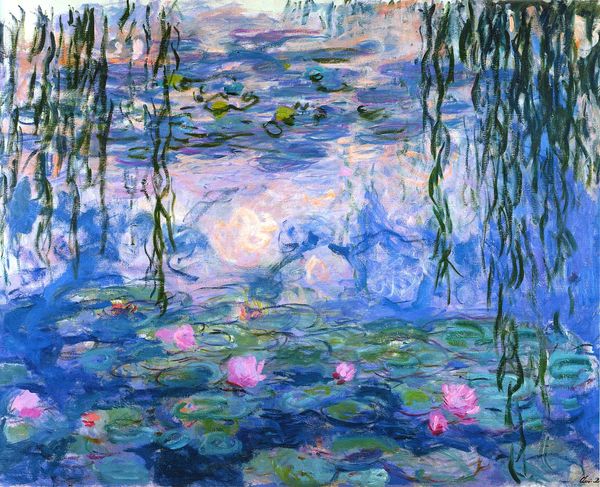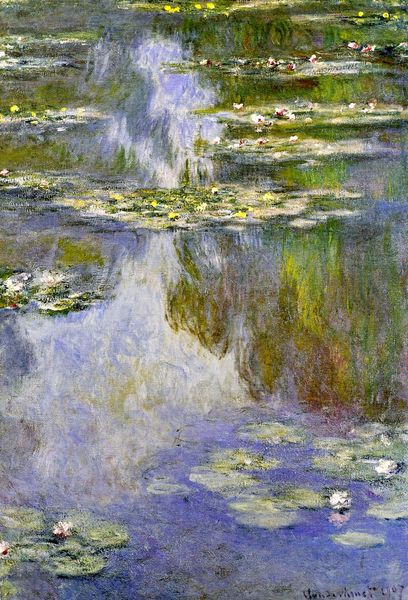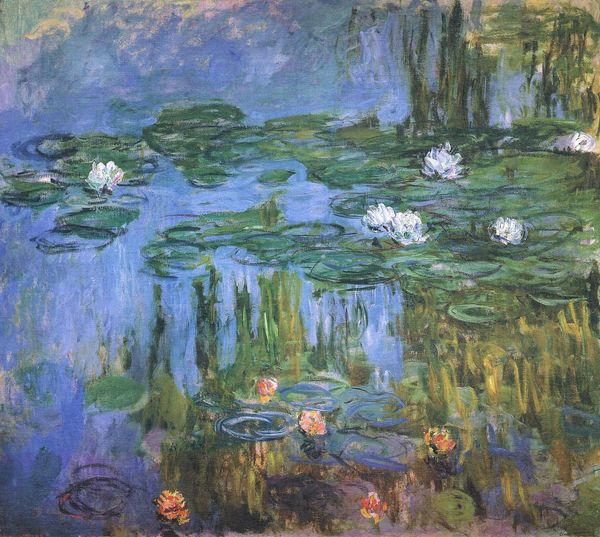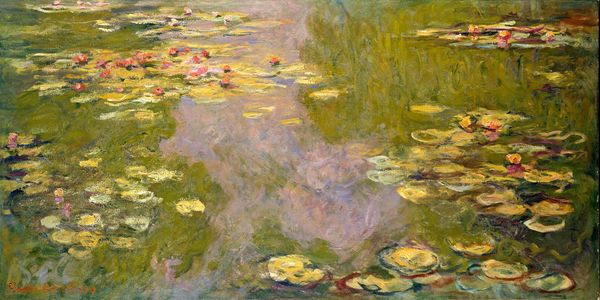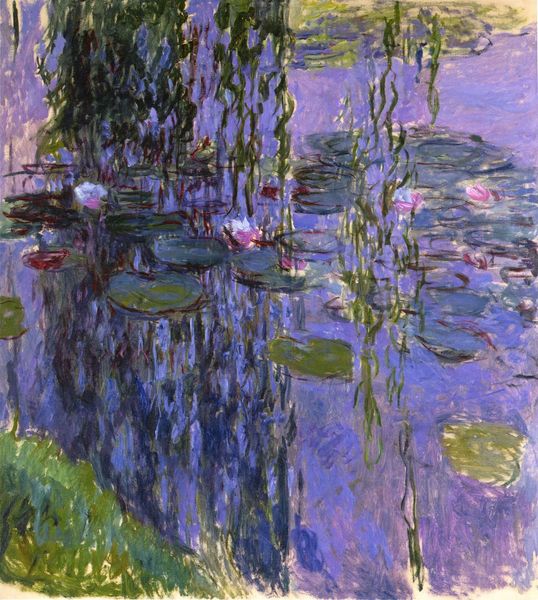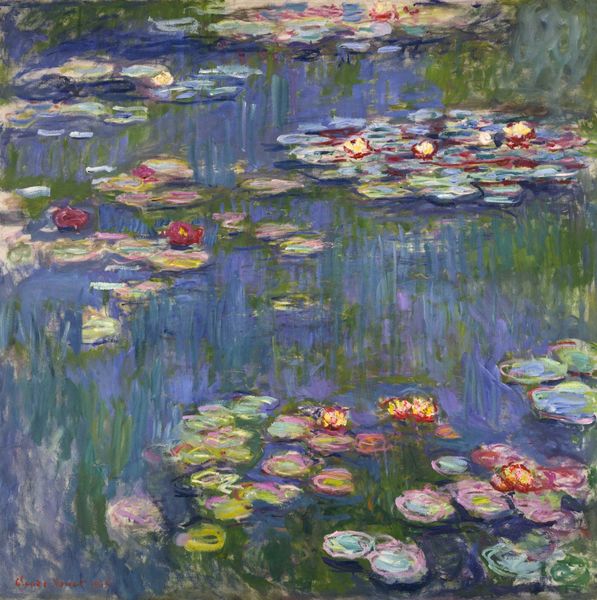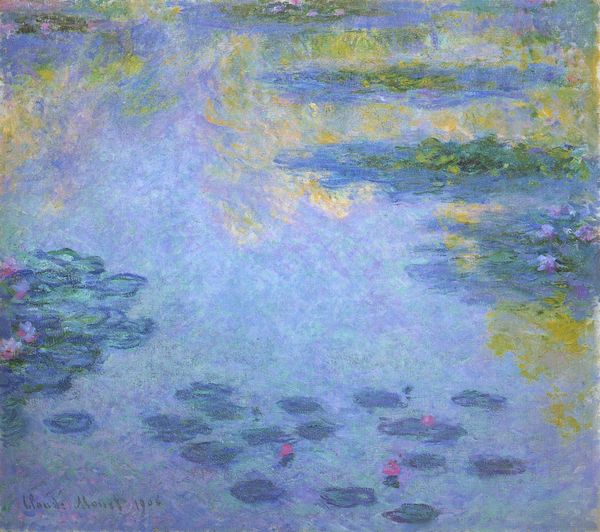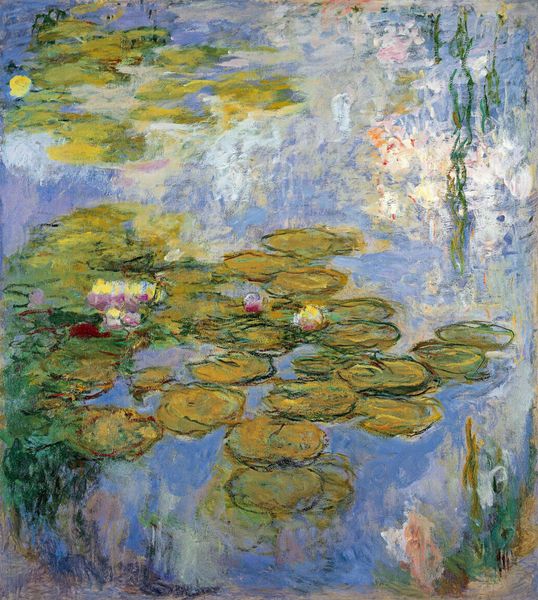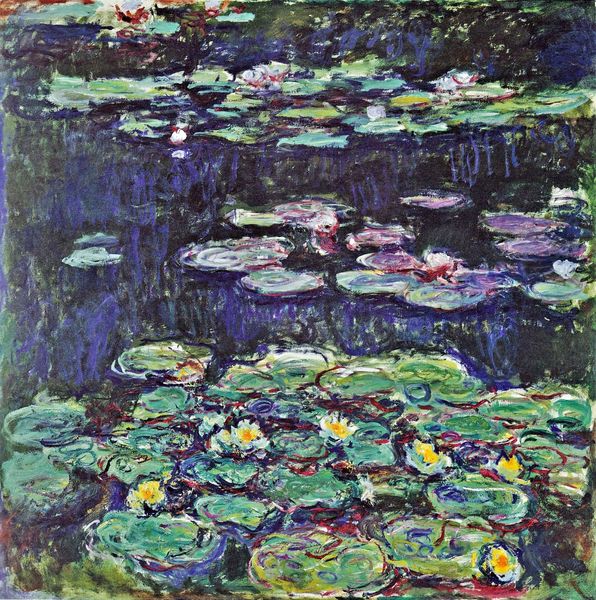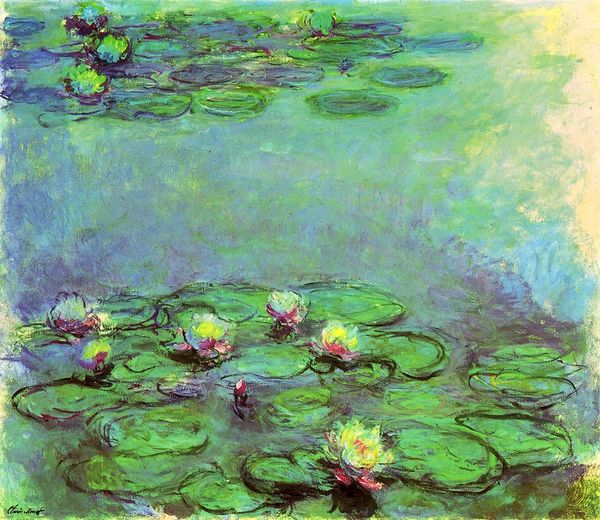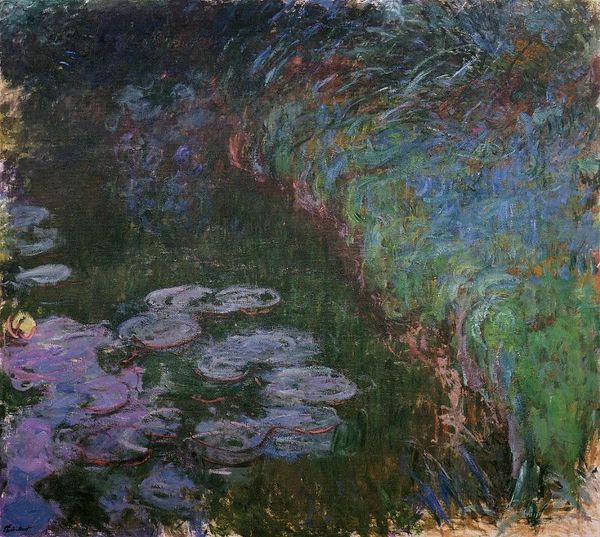
Copyright: Public domain
Curator: It's easy to be swept away by the shimmering surface. Monet's "Water Lilies," from 1917, appears almost as a dreamscape. I feel completely enveloped by this floating world, even from this distance. What do you think? Editor: The composition strikes me immediately. It lacks a horizon line, defying traditional landscape painting. You’re right, one feels totally immersed. What sociopolitical forces shaped the making of the *Water Lilies*? I mean, Monet worked on these monumental canvases in the later years of his life. Curator: Absolutely, by 1917, the First World War was raging across Europe. France was heavily impacted and so, many view this period in his life, including the *Water Lillies* themselves, as a retreat. His son was at war and close friend died. A sort of melancholic refuge to nature. Editor: Yes! It is difficult to comprehend this serene vision and the political climate surrounding its creation. In terms of public reception, these paintings provide an interesting case study on the political value of art for solace during periods of great social distress. Curator: This specific application of color—the lavender and rosy hues layered with emerald—also plays a crucial role, don't you agree? One could even view this artwork from the lens of queer ecology, because of its emphasis on nature and the beauty that flourishes through queer representation. I keep coming back to the idea of resistance in its sensuality, of defying prescribed norms through color. Editor: That's a compelling perspective. Certainly, its lack of a clear perspectival system could be interpreted as a way to challenge viewers’ established vision and comprehension of pictorial structure. But, from a historical viewpoint, it seems like these paintings question traditional means of how an artwork serves a social role to alleviate anxieties. The question then becomes—what imagery helps or hinders political issues? Curator: Perhaps the painting then offers us, in the 21st century, a potent tool to envision alternate futures, by decentering dominant power structures in favor of fluidity. A means, shall we say, to find a world where it’s easier to be, where one has more control over how they can be? Editor: An optimistic assessment! What *Water Lillies* reveals most clearly to me is how public institutions like this museum can engage in larger sociopolitical discourse, specifically in our era, to advocate for a politics of seeing and feeling that is attuned to both past and present issues.
Comments
No comments
Be the first to comment and join the conversation on the ultimate creative platform.
